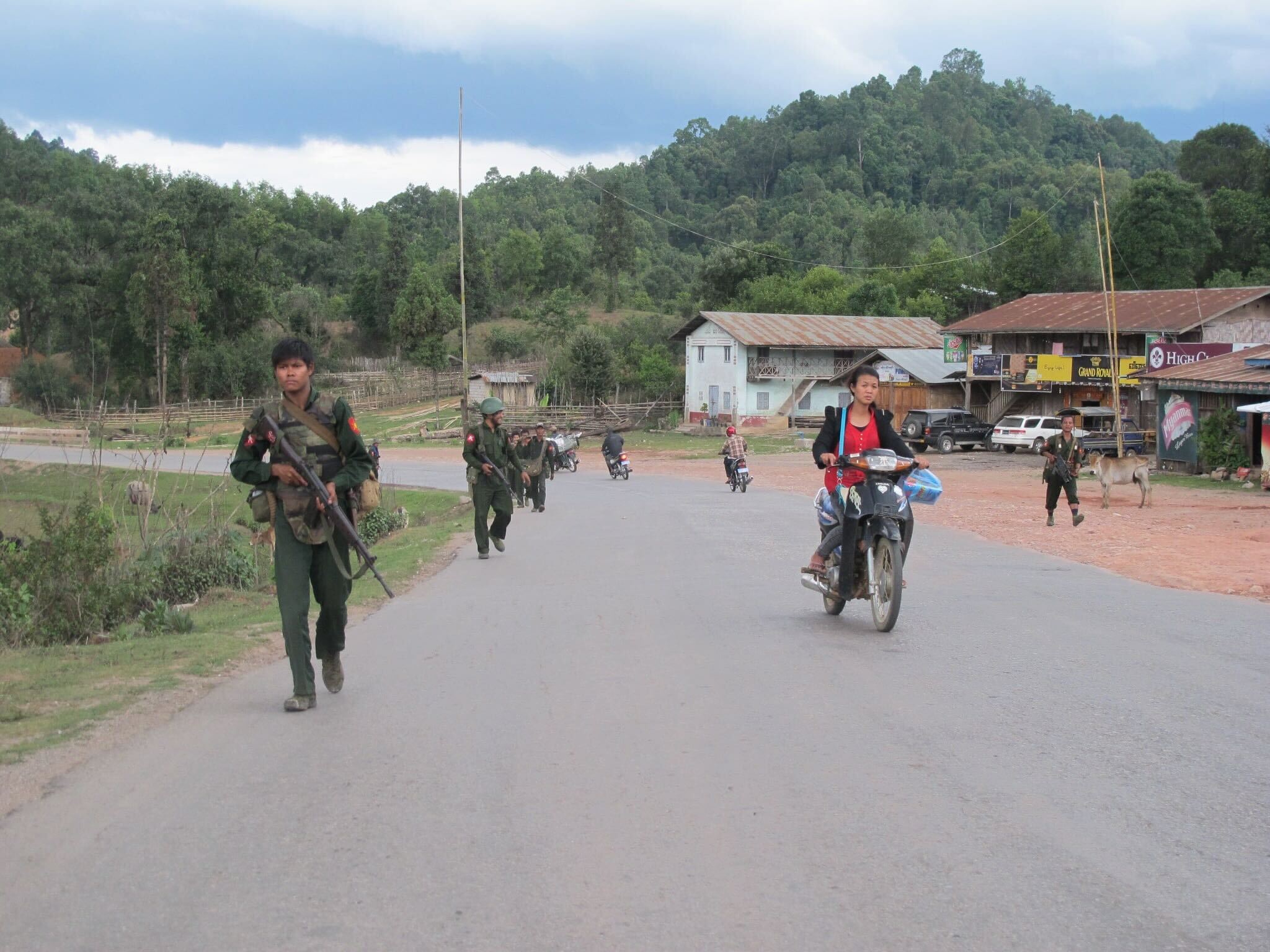Violence against women in Myanmar
Violence in Myanmar: women targeted by the military and resistance groups

Women in Myanmar have been exposed to massive violence since the military coup in 2021.
© FNFAccording to the Georgetown Institute of Women, Peace and Security (2023), Myanmar (Burma) ranks 165 out of 177 countries for women's peace and security issues. This report displayed Myanmar as the worst country in East Asia and the Pacific region regarding the proximity to conflict. The military coup in 2021 was a devastating setback for gender equality in Myanmar, leaving women and girls acutely vulnerable to discrimination, violence, and exploitation.
As the conflict between the State Administration Council (SAC) of Myanmar, the People’s Defense Forces (PDF), and Ethnic Armed Organizations (EAOs) intensifies, an increasing number of people are being forced to flee their homes. As of February 2025, more than 3.5 million people in Myanmar are internally displaced (OCHA Myanmar, 2025). The widespread gender-based violence, already prevalent before the coup, has been significantly exacerbated by the ongoing political and armed conflict. This escalation is driven by the absence of the rule of law and the prevailing economic hardships resulting from widespread loss of income and livelihoods.
Types and consequences of Gender-Based Violence
The violence against women is perpetrated by the Burmese Military (Tatmadaw), Resistance Forces (including both PDFs and EAOs), as well as general civilians, including their husbands, boyfriends, and relatives. Crimes committed by the Burmese Military during their attempts to take control of territories include airstrikes, land-mining, and horrific acts such as burning women alive. SAC soldiers have been reported to commit rape, including gang rape, against women and girls while marching through villages. Women are also subjected to torture during detention, and sexual harassment and assault are common forms of violence inflicted by the Burmese Military. Persons with disabilities (PWD) and underage girls are among the victims targeted by SAC forces. More recently, forced conscription and abduction have emerged as additional forms of violence faced by women in areas controlled by the SAC. Women in conflict-driven communities have also experienced violence at the hands of resistance organizations, including groups affiliated with the National Unity Government (NUG) and EAOs. These groups have been reported to commit rape, including gang rape, as well as sexual assault and harassment. These groups have also targeted girls under the age of 18 as victims of rape. Like the Tatmadaw, they engage in the forced conscription of women and girls.
Survivors of violence experience severe physical and emotional consequences. Some sustain permanent disabilities due to the violence, while others suffer deep psychological trauma. Many women and girls withdraw from their communities, isolating themselves out of shame, believing they are no longer “clean.” Cultural norms often reinforce this guilt, leading them to become increasingly silent and disengaged from community activities. In conservative communities, survivors and their families may also face social ostracisation. As a result, some are forced to relocate to escape their distressing circumstances.
Gaps in the justice system and proposed approaches
The accessibility of justice mechanisms for women in the community varies by location. However, for cases of gender-based violence and war crimes committed by SAC soldiers and their allies, justice is almost nonexistent due to the entrenched culture of impunity within the Burmese Military.
This study recommends providing institutional support to Alternative Governance Institutions to ensure they are accountable to their citizens through effective laws, policies, and guidelines for handling GBV cases. At the same time, it is crucial to recognize the role of women leaders and women’s rights organizations in promoting women's access to justice in conflict-affected areas. In areas with limited resources for formal justice mechanisms, efforts should strengthen community dispute resolution systems to adopt a gender-sensitive and survivor-centered approach. Additionally, clear dissemination of information on reporting procedures is essential. Programs and projects should be introduced to improve women's access to justice-related information and resources, ensuring they understand their rights and the available mechanisms for seeking justice.
For security reasons, the authors of this study wish to remain anonymous.
